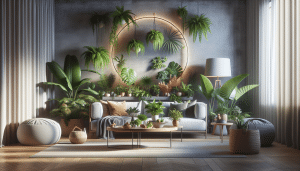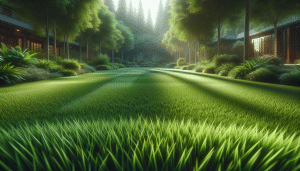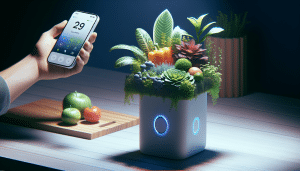Smart Ways to Transform Small Gardens with Big Impact
Henry King September 20, 2025
Discover how anyone can create a vibrant outdoor oasis, even with limited space. This guide uncovers simple landscaping strategies, vertical gardening tips, and cost-effective plant choices, all tailored for small gardens where every inch matters. Unlock the potential of your compact outdoor space and make it feel wonderfully spacious.
Landscaping Tricks that Maximize Space
Creative landscaping can make even cramped gardens feel expansive and inviting. By choosing multi-functional pathways that wind through your space, you encourage a sense of exploration while maintaining functionality. Curved lines, as opposed to straight edges, naturally guide the eye and give the illusion of a larger area. Thoughtful placement of stepping stones, ground cover plants, or pea gravel keeps things tidy and visually interesting. Many home gardeners find that layering tall plants at the back and low growers up front forms depth, transforming tiny environments into lush retreats.
Using border and corner plantings adds drama and maximizes every bit of soil. Instead of filling flowerbeds with just one type of plant, mixing textures and heights can lead to a garden that feels abundant. Dwarf shrubs, perennial grasses, and flowering annuals are smart options for border layers. These plant selections provide seasonal movement and color, ensuring interest throughout the year regardless of space constraints. Experts often recommend grouping odd numbers of plants, which creates balance in a small garden and avoids a crowded look (Source: https://hgic.clemson.edu/factsheet/landscaping-for-small-spaces/).
Mirrors and reflective surfaces are landscaping tricks well-suited to restricted plots. Small mirrored panels on fences, for example, bounce light and reflect greenery, making an area appear twice its size. Raised beds not only organize plants but also break up the space in visually pleasing tiers, helping you fit more into a compact backyard. This method can also improve soil drainage and accessibility, especially in urban gardens where good ground may be scarce. With careful design choices, even the smallest patio or yard can feel spacious and welcoming.
Vertical Gardening: Turning Walls into Growing Spaces
Going vertical is a game-changer for maximizing plantable real estate. If ground space is limited, consider trellises, wall planters, and hanging containers to lift your greenery and blooms. This approach works for herbs, veg, and ornamentals alike. Fences, railings, and old ladders all make useful supports. Vertical gardens bring color and biodiversity to plain walls, while also improving air quality and providing privacy. Start with lightweight planters and low-maintenance species, then expand as you gain confidence in training vines or trailing plants upward.
Choosing suitable crops for vertical gardening helps ensure success. Popular options include strawberries, pole beans, nasturtiums, and sweet peas. Edible climbers deliver harvests without monopolizing ground space, making them ideal for kitchen gardens. If sun is scarce, shade-tolerant ferns, ivy, or hostas can provide texture and lush coverage. Watering needs should be monitored closely, as elevated containers dry out faster than ground beds. For ease of care, automatic drip irrigation or self-watering planters can be incorporated to keep everything thriving with minimal fuss (Source: https://extension.psu.edu/vertical-gardening).
Larger walls support ambitious vertical gardens using modular green wall panels. These pre-planted systems are available for both DIY gardeners and as installable solutions through garden centers. Modular panels can host vegetables, succulents, or annuals—with irrigation systems often built-in for convenience. This technique brings natural beauty to fence lines and the exteriors of homes, adding dramatic visual interest that’s easy to update with the seasons. Whether you start with a single tower or transform a full wall, vertical gardening changes the way you think about outdoor space.
Plant Selections that Thrive in Small Gardens
Careful plant selection makes all the difference in a limited space. Dwarf varieties, compact shrubs, and miniature roses offer color and form without growing out of bounds. Many evergreens stay manageable and provide year-round structure as the backdrop for rotating annuals and bulbs. Shade-tolerant species such as astilbe, heuchera, and hydrangea also perform well in small yards bordered by fencing or tall buildings. By focusing on long-blooming or multi-season species, you guarantee a garden that’s always interesting without the need to replant constantly.
Edible plants can be just as decorative as flowers. Bush tomatoes, chard, lettuce, and basil varieties bred for pots are excellent choices for container and edge planting. Companion planting with pollinator-friendly blooms such as calendula and marigold draws beneficial insects to the yard, supporting a thriving ecosystem. Mixing textures—think spiky grass, feathery dicondra, and broad-leafed hostas—adds richness to even the smallest plot. Those keen on sustainability might consider native plants, which require less water and care while thriving in local climates (Source: https://plants.ces.ncsu.edu/find_a_plant/?plant_type__id=17).
The plant palette in a compact setting should include at least one species for each season. Early spring bulbs, summer perennials, autumnal foliage, and winter evergreens ensure the garden never feels bare. Staggering colors and shapes provides depth and keeps the interest high throughout the year. When working in containers, opt for ‘thriller, filler, spiller’ arrangements to maximize visual appeal in every pot. Curating with intention results in flourishing small gardens that look much bigger and more dynamic.
Strategic Use of Containers and Planters
Containers unlock versatility for any small garden. They allow you to move color and structure where needed, filling gaps and refreshing the visual layout each season. For those dealing with poor soil, containers are invaluable—they offer a controlled environment perfect for nurturing prized specimens. Available in almost any size or style, planters can be stacked, grouped, or even hung along fences to create layers of greenery. Balcony gardeners, in particular, rely on this tactic to cultivate lush retreats with a small footprint.
Choosing the right soil and irrigation is crucial for container success. Well-draining potting mixes and pots with adequate drainage holes prevent roots from becoming waterlogged. Incorporating water-retaining crystals or adding mulch helps maintain moisture during hot spells, reducing the need for constant watering. Elevated planters can also extend the growing season by warming more quickly and staying frost-free longer in early spring and late autumn. Mixing annuals, perennials, and slow-growing shrubs in coordinated schemes produces beds that feel curated, not crowded (Source: https://extension.umn.edu/flowers/gardening-containers).
Container gardening encourages creativity. Old buckets, wooden crates, and repurposed household items can be given new life as planters, adding unique character to an outdoor space. Wheels on large pots make rearranging easy, letting you experiment with color patterns, textures, and focal points. By elevating some planters and grouping others at ground level, you develop a three-dimensional planting strategy that feels lush and intricate—no matter how small the square footage.
Lighting, Accessories, and Pathways for Ambiance
Lighting is the secret to making a garden inviting after sundown. Solar stake lights, string lights, and LED spotlights transform small spaces into enchanting nooks for evening relaxation. By illuminating paths and feature plants, light layers add a depth that can double the perceived size of a yard. Mirrors, water features, and reflective glass ornaments amplify the effect, making corners seem more open and lively. These touches create a cozy yet expansive ambiance, perfect for entertaining or finding a tranquil moment outdoors.
Accessorizing with garden art, small statues, and movable seating allows for flexible styling. Folding benches, compact tables, and stackable chairs can be tucked away to free space for gatherings or relaxation. Edging pathways with mini pavers or gravel maintains a clean appearance, helping define areas for dining, lounging, or growing. Even in the smallest plot, the right combination of accessories can create distinct zones that appear larger and more functional than their actual dimensions suggest (Source: https://www.rhs.org.uk/garden-inspiration/small-gardens).
Paths and stepping stones also direct traffic and draw guests’ eyes to focal points, making the journey through the garden an experience in itself. Swooping paths, rather than straight ones, soften the edges of the space. A clever arrangement of lighting and seating can encourage storytelling, relaxation, or moments of connection with nature. Every feature—no matter its size—contributes to a sense of cozy abundance.
Common Mistakes and How to Avoid Them
Packing in too many plants or oversized furniture pieces can overwhelm small gardens. Resisting the temptation to overfill is key to preserving space for movement and enjoyment. It’s easy to be enthusiastic and want every new plant or décor item, but restraint helps make the garden feel relaxing rather than cramped. Another pitfall is neglecting vertical and overhead areas, which could host climbers, lights, or hanging planters to enhance space without using precious ground real estate.
Forgetting about seasonal upkeep can result in untidy, underperforming spaces. Regular pruning, deadheading, and cleaning containers ensure that even compact gardens always look their finest. It’s wise to plan for growth—leaving enough breathing room between specimens guarantees mature plants won’t outcompete each other for water, light, or nutrients. Mulch and groundcovers prevent weed invasions and reduce ongoing maintenance, supporting a more sustainable environment (Source: https://extension.uga.edu/publications/detail.html?number=C943&title=landscaping-strategies-for-small-spaces).
Clashing design elements, poor lighting, or mismatched containers can break up visual harmony. Sticking to a cohesive theme and carefully planning color palettes will yield better results and enhance the sense of tranquility in your outdoor oasis. With a clear vision, restraint in plant selection, and mindful arrangement of pathways and seating, small gardens become sanctuaries that invite lingering and spark inspiration—proof that outdoor magic isn’t just reserved for grand estates.
References
1. Clemson Cooperative Extension. (n.d.). Landscaping for Small Spaces. Retrieved from https://hgic.clemson.edu/factsheet/landscaping-for-small-spaces/
2. Penn State Extension. (n.d.). Vertical Gardening. Retrieved from https://extension.psu.edu/vertical-gardening
3. NC State Extension. (n.d.). Find a Plant – Compact and Dwarf Varieties. Retrieved from https://plants.ces.ncsu.edu/find_a_plant/?plant_type__id=17
4. University of Minnesota Extension. (n.d.). Gardening in Containers. Retrieved from https://extension.umn.edu/flowers/gardening-containers
5. Royal Horticultural Society. (n.d.). Small Gardens: Inspiration. Retrieved from https://www.rhs.org.uk/garden-inspiration/small-gardens
6. University of Georgia Extension. (n.d.). Landscaping Strategies for Small Spaces. Retrieved from https://extension.uga.edu/publications/detail.html?number=C943&title=landscaping-strategies-for-small-spaces







